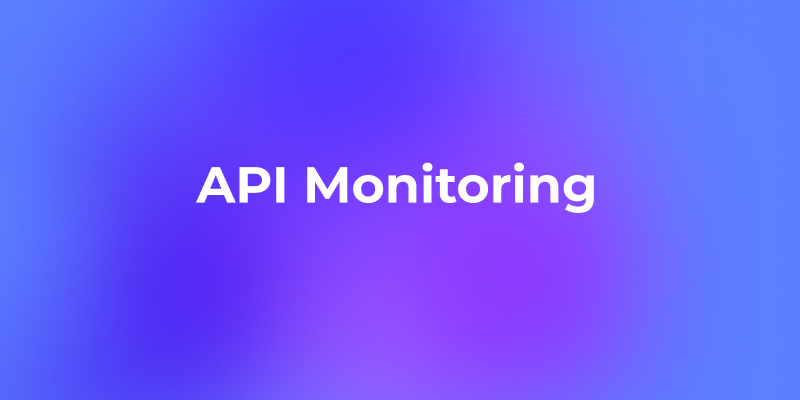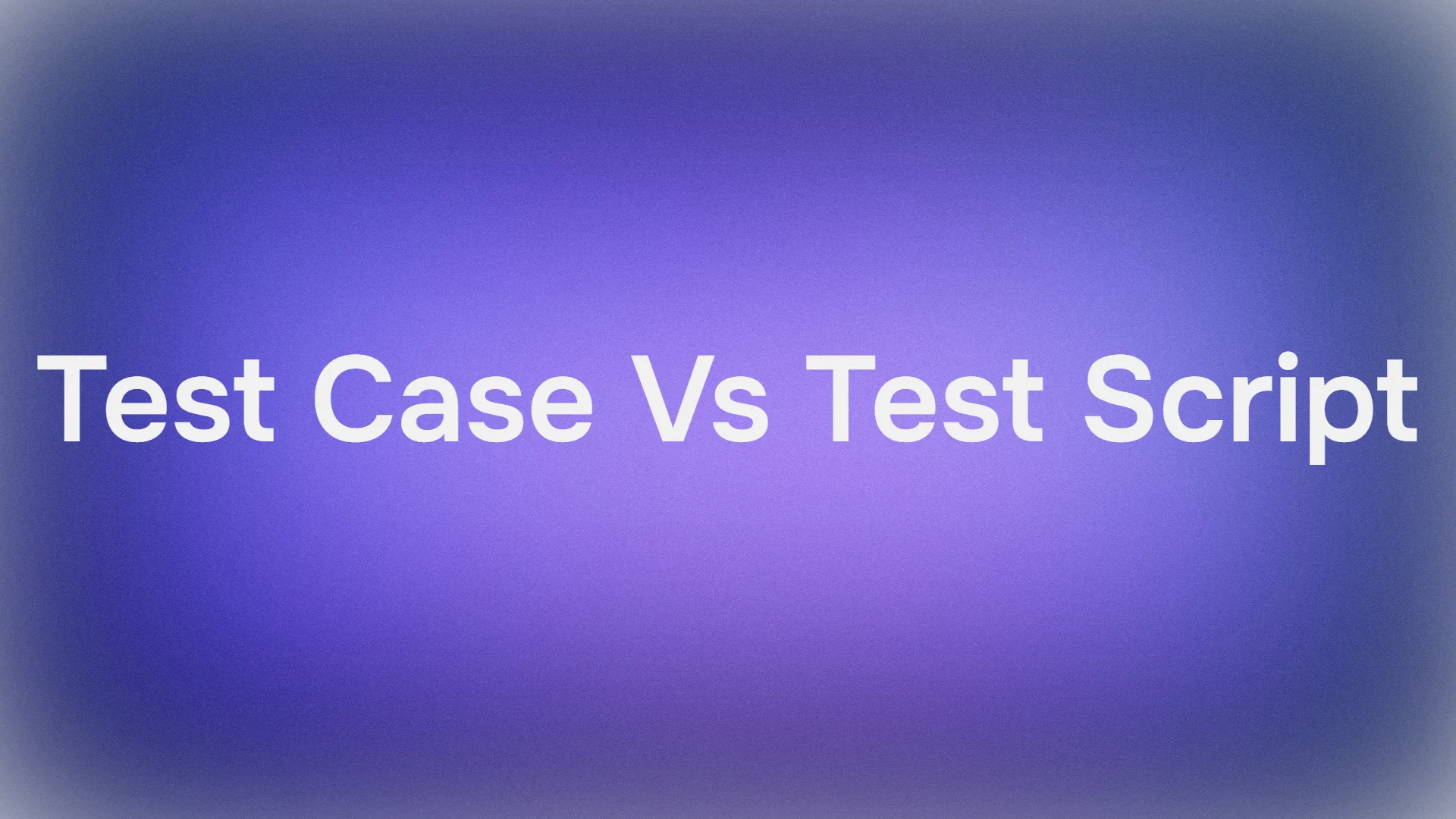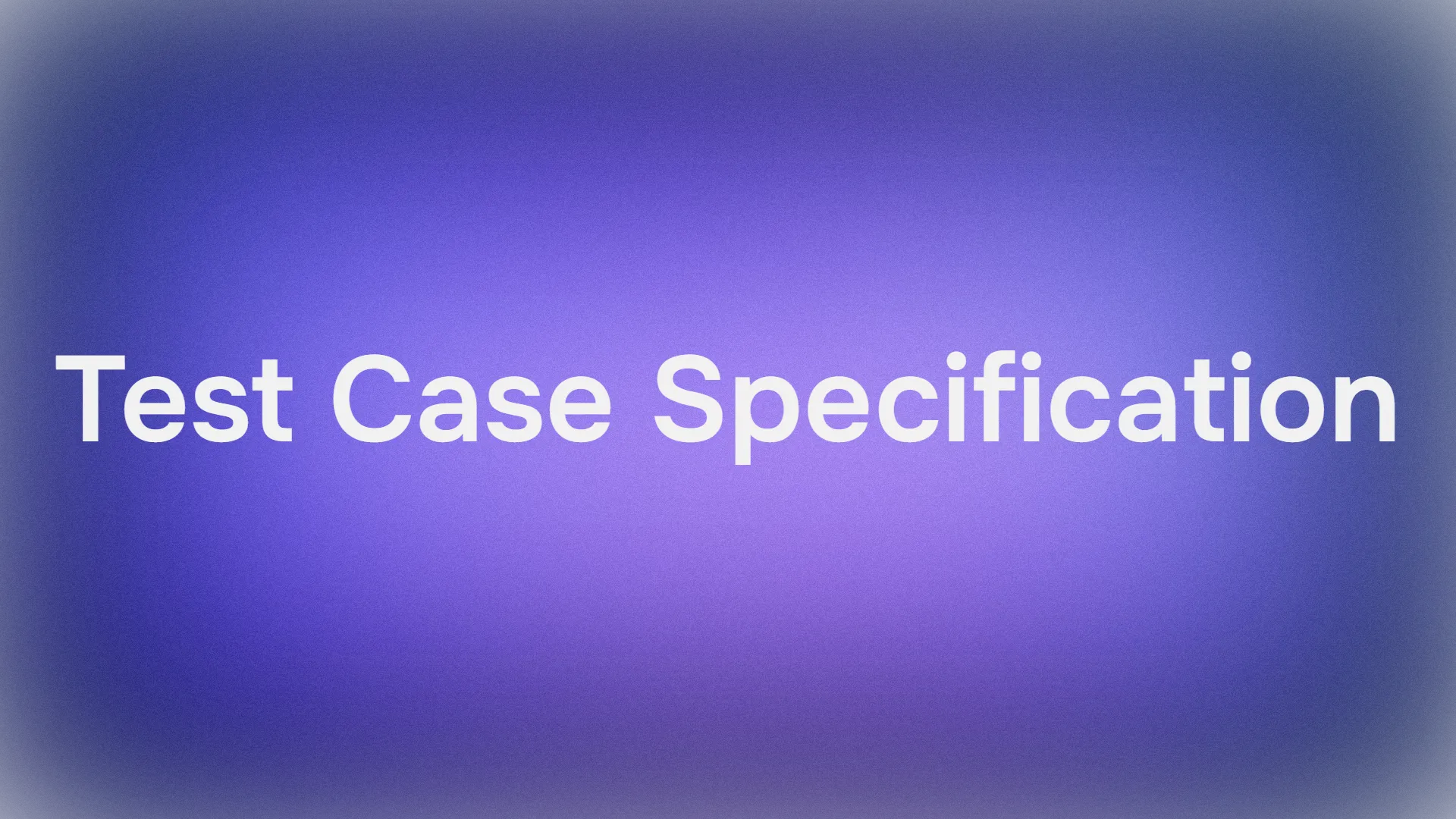In today’s connected world, APIs are the lifeblood of applications, powering everything from mobile apps and websites to IoT devices and cloud services. But here’s the thing: APIs aren't just "set it and forget it". Without API monitoring, you’re flying blind, risking downtime, slow performance, and frustrated users.
APIs are the invisible threads holding together our connected digital world. Whether you’re streaming your favorite show, paying for coffee with your phone, or using a rideshare app, APIs make it all possible. But here’s the catch: when APIs fail, the user experience suffers, revenue can take a nosedive, and brands risk losing trust. That’s where API monitoring comes in.
Throughout this post, I’ll show how API monitoring works, why it matters, and how Apidog fits perfectly into the picture.
Want an integrated, All-in-One platform for your Developer Team to work together with maximum productivity?
Apidog delivers all your demands, and replaces Postman at a much more affordable price!
What Is API Monitoring?
At its core, API monitoring means continuously tracking the health, performance and availability of APIs by observing their behavior, usage and response times. It’s like having a security camera and performance dashboard watching your APIs 24/7, so you catch small issues before they become major outages.
This process often involves sending requests to an API at set intervals, measuring response times, checking the validity of responses and ensuring uptime. Think of it as running a constant health check for your API to make sure it’s doing exactly what it’s supposed to do every second of every day.
API monitoring covers:
- Checking if the API is up and responding (availability)
- Measuring how fast the API replies (latency)
- Tracking error rates and response codes
- Understanding traffic patterns and usage volume
- Alerting the team when problems arise
Think of API monitoring as the vigilant gatekeeper who makes sure your APIs stay strong, fast, and available day and night.
Why API Monitoring Matters in 2025
APIs have become mission-critical for modern applications. According to industry studies, over 83% of all internet traffic comes from APIs. That means if your API goes down or slows to a crawl, your users immediately feel the impact.
Here’s why API monitoring is so important today:
- User Experience: Slow or failing APIs disrupt apps and frustrate users instantly.
- Business Impact: Your APIs often power revenue-generating services downtime costs money.
- Complex Architectures: Modern systems are distributed with microservices monitoring prevents cascading failures.
- Security: Monitoring reveals suspicious patterns, helping detect and block attacks quickly.
- Compliance: Many industries require thorough logging and monitoring of API usage for audits.
- Capacity Planning: Knowing usage patterns helps optimize resources and cut costs.
- Continuous Improvement: Real-time feedback supports faster bug fixing and feature enhancements.
Without monitoring, you risk outages, poor service quality, and creeping technical debt.
The Core Components of API Monitoring
Effective API monitoring isn’t just about “pinging” your API and hoping for the best. It involves several core elements:
1. Uptime Monitoring
Tracks whether your API endpoints are available at all times.
2. Performance Monitoring
Measures how fast your API responds to requests.
3. Functional Testing
Checks if the API is returning the correct data and behaving as expected.
4. Security Monitoring
Looks for potential vulnerabilities or unusual access patterns.
Types of API Monitoring
API monitoring can take different forms depending on the goals and the environment.
- Availability Monitoring: Regularly ping your API endpoints (called synthetic monitoring) to ensure they’re reachable. If an endpoint goes down, you get notified immediately.
- Performance Monitoring: Track response times for each API call to understand if your backend or network is slow and needs optimization.
- Error Rate Monitoring: Watch for spikes in HTTP error codes like 4xx (client errors) and 5xx (server errors). Sudden increases usually flag bugs or misconfigurations.
- Traffic and Usage Analytics: Know who’s calling your APIs, how often, and which endpoints are most popular. This helps with scaling and prioritizing fixes.
- Security Monitoring: Detect abnormal access patterns, unusual IPs, or repeated failed authentications that could indicate an attack.
- Transaction Tracing: For complex microservices, trace requests from start to finish to pinpoint bottlenecks or failures in specific services.
Combining these views gives a 360° picture of API health.
How API Monitoring Works: The Basics
Here’s a simplified view of the API monitoring workflow:
- Set up monitoring checks: Define which endpoints to test, what success looks like (e.g., HTTP 200) and thresholds for latency or errors.
- Periodic requests: Monitoring tools send requests to your API at regular intervals from various locations.
- Collect metrics: The tool measures response time, status codes, payload sizes and other details.
- Analyze & visualize: Dashboards show trends, averages, spikes and anomalies.
- Alerting: Configured alerts notify team members of issues through email, Slack, SMS, etc.
- Resolution & reporting: You troubleshoot, fix problems and generate reports to share with stakeholders.
API monitoring can be simple or sophisticated, depending on your architecture and priorities.
Benefits of API Monitoring
When done right, API monitoring can deliver huge advantages:
- Faster problem detection
- Improved reliability
- Better user experience
- Reduced downtime costs
- Enhanced security posture
Common API Monitoring Challenges and How to Overcome Them
Of course, API monitoring isn’t without its challenges.
- False Positives: Not every slow response or timeout indicates a real issue. I tune thresholds and alert criteria carefully.
- Monitoring Overhead: Monitoring itself can consume API capacity, so I balance test frequency and coverage.
- Distributed Systems Complexity: Tracing transactions across microservices requires advanced tooling.
- Data Overload: Without proper dashboards or filtering, monitoring data can overwhelm teams.
- Cost: Some monitoring tools have pricey usage tiers.
- Monitoring Blind Spots: Private or internal APIs can be tough to monitor externally.
- Alert Fatigue: Too many alerts cause teams to ignore important warnings so alert rules need regular review.
Using a platform like Apidog, which integrates API design, testing, monitoring, and alert management, helps me address these challenges efficiently.
Best Practices for API Monitoring
Want to get the most out of API monitoring? Follow these tips:
- Monitor from multiple locations – This ensures you’re seeing global performance, not just local.
- Set realistic alert thresholds – Avoid alert fatigue.
- Combine synthetic and real user monitoring – You’ll get both proactive and reactive insights.
- Integrate monitoring with DevOps pipelines – Catch issues before they go live.
- Use an all-in-one tool like Apidog – Simplify your workflow.
How to Get Started with API Monitoring: Step-by-Step Advice
- Identify critical APIs and endpoints: Start where failure impacts users most.
- Define SLA targets: Decide acceptable response times and uptime goals.
- Set up monitoring checks: Use synthetic tests mimicking real user requests.
- Configure alert thresholds: Balance sensitivity to catch real issues without false alarms.
- Implement dashboards: Visualize API health metrics in real time.
- Integrate with incident management: Alert channels like Slack or PagerDuty ensure prompt responses.
- Regularly review monitoring data: Spot trends and plan improvements proactively.
- Automate: Integrate monitoring into CI/CD to catch regressions early.
- Expand coverage: Monitor newly released APIs and internal services.
- Collaborate across teams: Share monitoring insights with developers, QA, security, and product managers.
Why I Trust Apidog for All My API Monitoring Needs
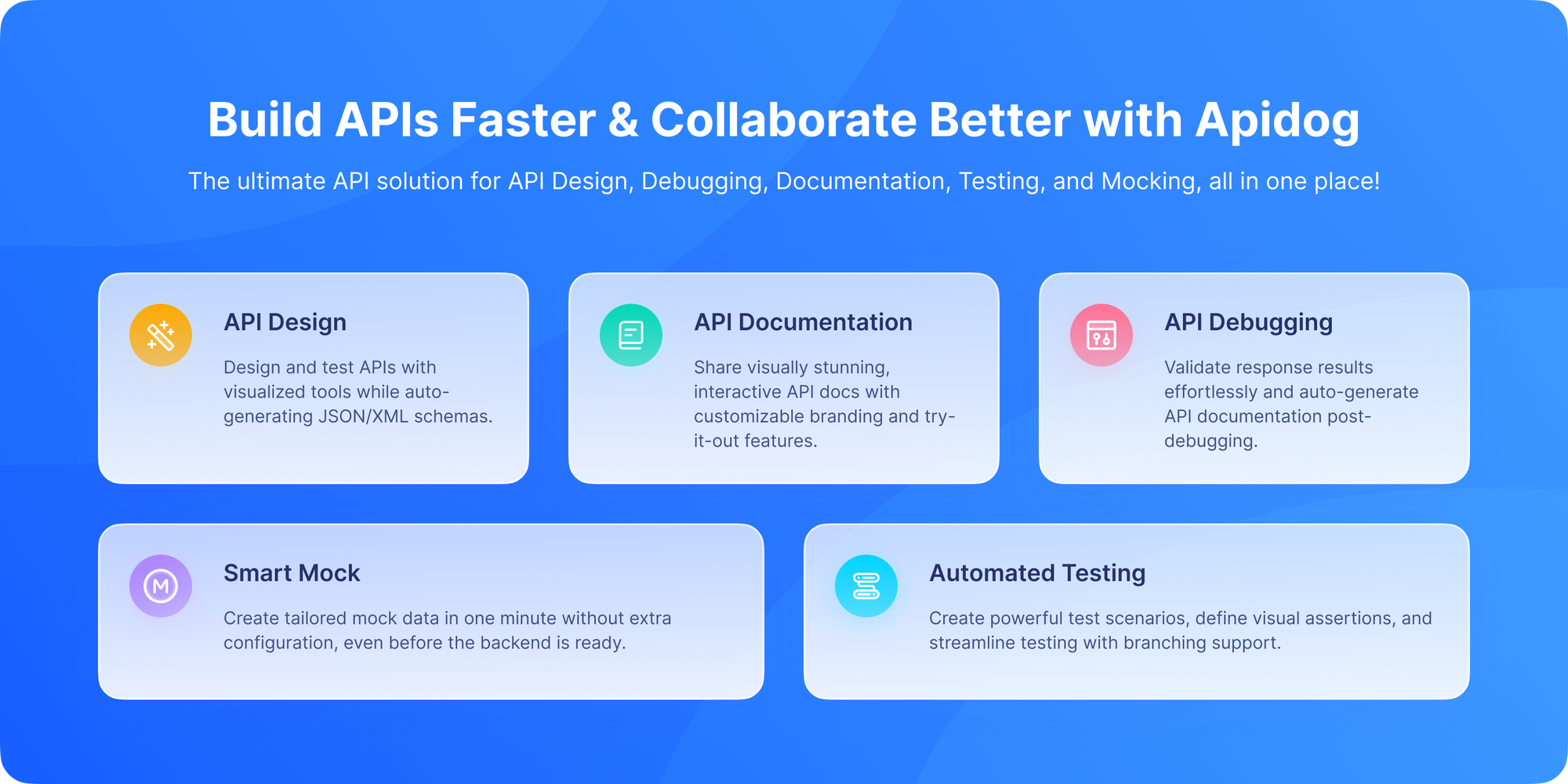
Apidog it’s not just a tool for API design and testing it also offers powerful monitoring capabilities. Apidog is a go-to platform because it combines lightweight setup with rich monitoring features, including:
- Real-time alerts: Get notified instantly of failures or anomalies, customizable by endpoint or metric.
- Mock APIs and Testing: Test APIs continuously for functional and security issues alongside monitoring.
- Collaborative platform: Teams can share dashboards, alerts, and reports easily.
- No coding required: Visual configuration lowers entry barriers for non-technical team members.
- Supports multi-protocol APIs: REST, SOAP, GraphQL, and asynchronous APIs all monitorable in one place.
- Cost-effective and scalable: Free tier available for starters, scaling with business needs.
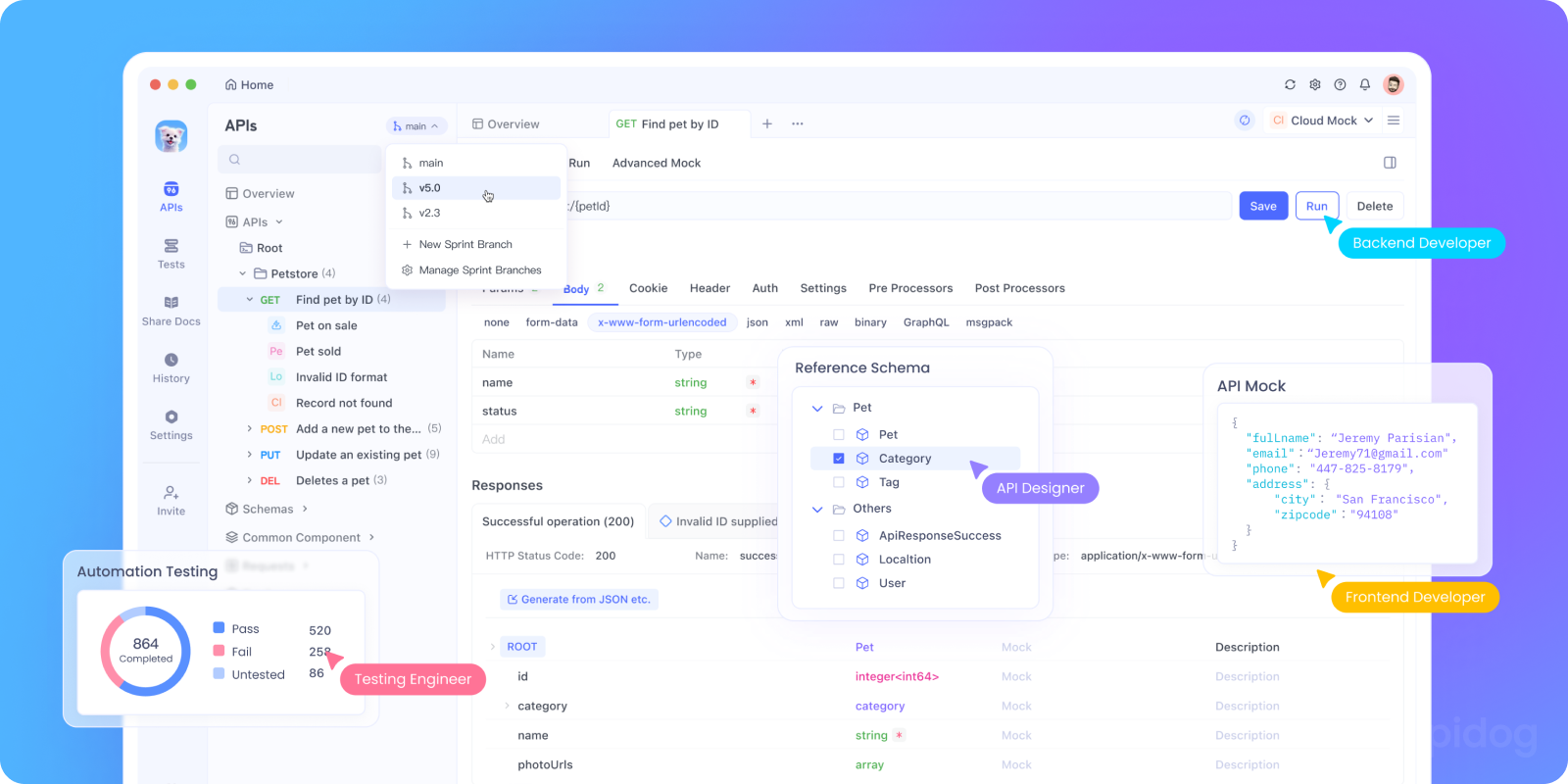
Because Apidog centralizes API design, testing, documentation, and monitoring, you don’t need to juggle multiple tools, making it perfect for small teams and large enterprises alike.
The Future of API Monitoring in 2025 and Beyond
In 2025, API monitoring will continue evolving thanks to:
- AI-powered anomaly detection – Smarter alerts with fewer false positives.
- Automated remediation – Systems that fix problems before users even notice.
- More security integration – APIs will be monitored not just for performance, but also for compliance and threat detection.
- Deeper integration with CI/CD – Monitoring will be baked into every stage of development.
API Monitoring Is Your Secret Sauce in 2025
APIs keep digital services running, but without continuous API monitoring, you risk downtime, poor performance, and security lapses. The right monitoring strategy saves time, protects user trust, and drives business value.
Remember: using an all-in-one platform like Apidog means you get not just monitoring, but API design, testing, and collaboration all in one place. It’s how I keep my APIs strong, scalable, and secure in a world that never sleeps.
Don’t wait for an outage to take action download Apidog for free today and start monitoring your APIs with confidence.
